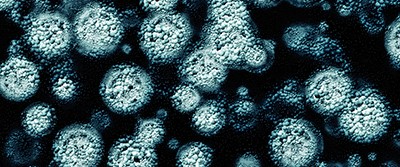Remote-Control Drug Delivery

By Iva Fedorka
Scientists have found a way to use nanoparticles to help patients avoid some of the negative effects of chemotherapy.
Cancer drugs need to be strong enough to kill tumor cells. But hair loss and other side effects of chemotherapy occur because the medication also affects healthy cells. To limit the action of these medicines to cancerous cells only, nanoparticles are being used to enclose the medication. When the drug reaches its target, a kind of remote control triggers its release.
Nanoparticles
Nanoparticles are very small pieces of inorganic materials that are typically surrounded by a layer of ions, inorganic, and organic molecules. Formerly called “ultrafine” particles, they usually range from 1 to 100nm in size.
Nanoparticles act as a bridge between bulk materials and atomic or molecular structures. For bulk materials with particles larger than 1µm, the particle surface area, expressed as a percentage of the total volume, is insignificant. But as the size of the material’s particles approaches the nanoscale, the percentage of surface area is much greater, which can create interesting and unexpected properties.
Packaging the Drug
The nanoparticle “package” contains two particles inside a membrane. One particle is a polymer to which the chemotherapy drug has been attached, using a heat-sensitive carbon bond. The second particle is made of iron oxide, a metal that responds to a magnetic field. When exposed to a specific type of magnetic field, the iron oxide molecules produce heat.
The package itself is wrapped in a water-soluble material. This allows the nanoparticle package to be introduced via the bloodstream, and also helps it escape detection by the body’s immune system. The total width of the nano-package is about 100nm, much smaller than a red blood cell or a bacteria.
Targeting the Tumor
When released into the bloodstream, the nanoparticles don’t travel specifically toward tumors, although they do tend to collect at tumor sites. Nanoparticles also can also accumulate in unintended places, like the liver.
In the past, researchers tried different ways to ensure that the nano-packages didn’t drop their drug cargo at an unwanted site, but without consistent results.
The Magnetic Solution
Carlos Rinaldi, a biomedical engineer at the University of Florida in Gainesville, led a team that developed a nanoparticle that will specifically release its medicine at the tumor site. Their findings were published in the journal ACS Applied Polymer Materials.
The proposed method is based on the heat produced when the iron oxide nanoparticle reacts to a magnetic field. The heat would break the chemical bonds that attached the drug to the polymer particle. It would also require a special magnetic field generator to limit the magnetic field to the tumor site and to avoid activating the medication in other locations.
Not Clinic-Ready
“The drug is not toxic while it’s inside the particle,” Rinaldi explained, “But the current work is a ‘proof of principle.’”
The method has not been tested on living cells or in animals. In fact, the particles have only been tested with a fluorescent molecule, and not the real drug.
The new nanoparticles are promising, and the U.S. Food and Drug Administration has already approved the use of iron-oxide nanoparticles in the body, he pointed out. The magnetic fields could reach tumors deep inside the body and eliminate the need for surgery.
“This is really, I would argue … a small step,” Rinaldi said. “There’s a lot of things we don’t understand very well.”
But every small step brings the technology closer to real-world use. “It’s an exciting field with a lot of potential applications,” he concluded.
Discussion Questions
- What are other common treatments for cancer?
- What is a biomedical engineer?
- What other uses exist for nanoparticles?
Vocabulary
- Tumor
- Polymer
- Fluorescent
